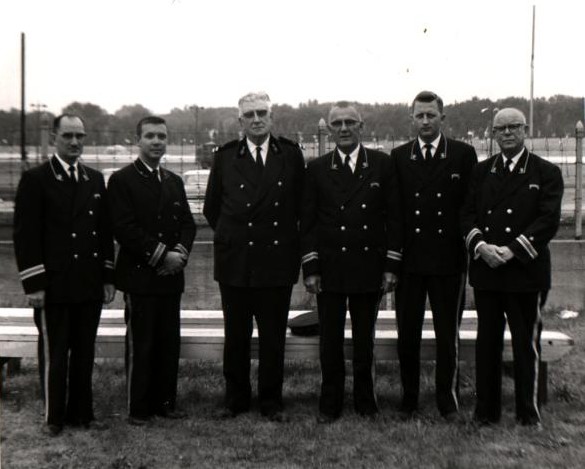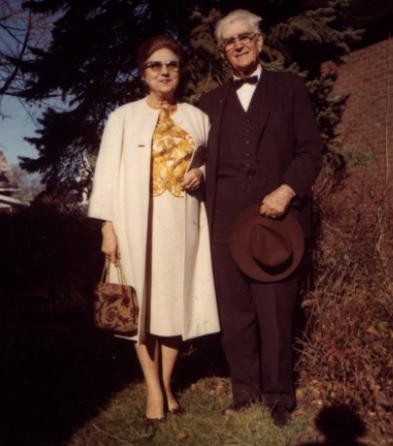Roger Andersen
Roger began his career as a band instructor in Radcliffe,
Iowa, before teaching in the West Monona Community Schools. He retired
from teaching in 1995 after serving twenty six years in the Ames School
District.
Mr. Andersen is a current member of the Fort Dodge Municipal
Band and has performed with the King Band since 1953 except from 1955-1957
when the Army's 3rd Armored Division Band needed him. Whenever a
teaching job took him a great distance from Fort Dodge, Roger still managed
to perform with the ensemble as a substitute. |
 |
My first awareness of Karl King came in 1943 as a young
school student. My mother and I were living in a apartment
on Fifth Avenue North in Fort Dodge, while my father was in the service.
I would notice this man who lived across the hall coming and going in what
I thought was a navy uniform carrying a strange looking case.
I though this was odd as there was no ocean close, so one day I asked the
landlady who he was. She told me he was a member of the Karl King
Band. That set me up for a lifelong interest in Mr. King.
My first opportunity to play with the band came in 1953,
when I was a student at Buena Vista College in Storm Lake.
My teacher, W. B. Green, recommended me to Mr. King, and I was hired for
some concerts for the 1953 summer season. That was the start
of my 50 year association with the band. I still remember the first march,
Invictus, and the thrill I got at the first downbeat.
It was quite an opportunity to sit beside Boyd Garton and play the demanding
tuba parts of Mr. King’s marches.
I was involved in playing for many fairs and circuses
during Mr. King’s tenure. One of the most memorable was the
1959 Iowa State Fair. The band played the afternoon and night
grandstand shows for a 10 day engagement. It was then I got
to play beside Johnny Kopecky, one of the finest tubaists I have
ever worked with. A memory I still have was rooming under the
grandstand for the run of the fair. Most of the band went to
downtown hotels, but I thought it was exciting to stay on the grounds.
My roommates were Bill Green, Bob Lowrey. and Karl Rogosch; an interesting
bunch. Also, there were some horse handlers and race car drivers
during the week.
The music for some of the shows was quite marked up to
accommodate the various acts. My favorite notation was when
the monkey grabs the elephants tail, segue to galop.

Bill Green named this group the Storm Lake Contingent.
Lee McGinnis, Tom Hatton, Karl, Walt Engelbart, Roger
Andersen, Bill Green
This photo was taken at 1959 Iowa State Fair.
Mr. King had many ideas about scoring for outdoor
show bands. One of his favorite observations was: They
used to write for 28 and make them sound like 60; now they write for sixty
and make them sound like 28.
In recent years, arrangers have attempted to “clean up”
some of his writings. I have heard “this sounds like a steam
calliope so we need to fix it” from well-intentioned scholars.
They failed to realize that he was writing for a small band playing outdoors,
and that was exactly the sound he wanted.

This photo of Karl and Ruth was taken at their home in
1969
Mr. King wrote a great deal of grade 6 music for professional
bands, but he also met the needs of school band programs with much quality
music of more attainable grade levels. This music served me well
throughout my teaching career.
back


